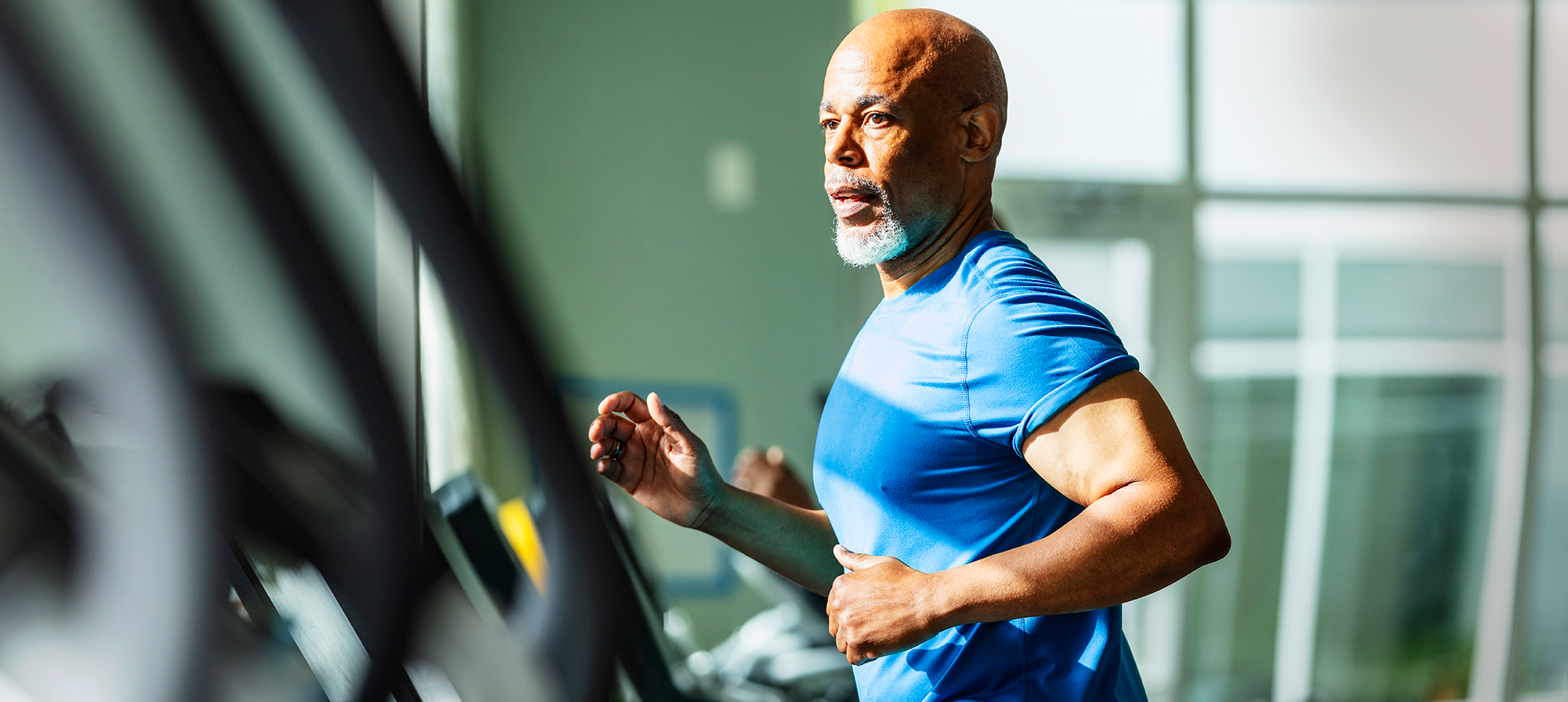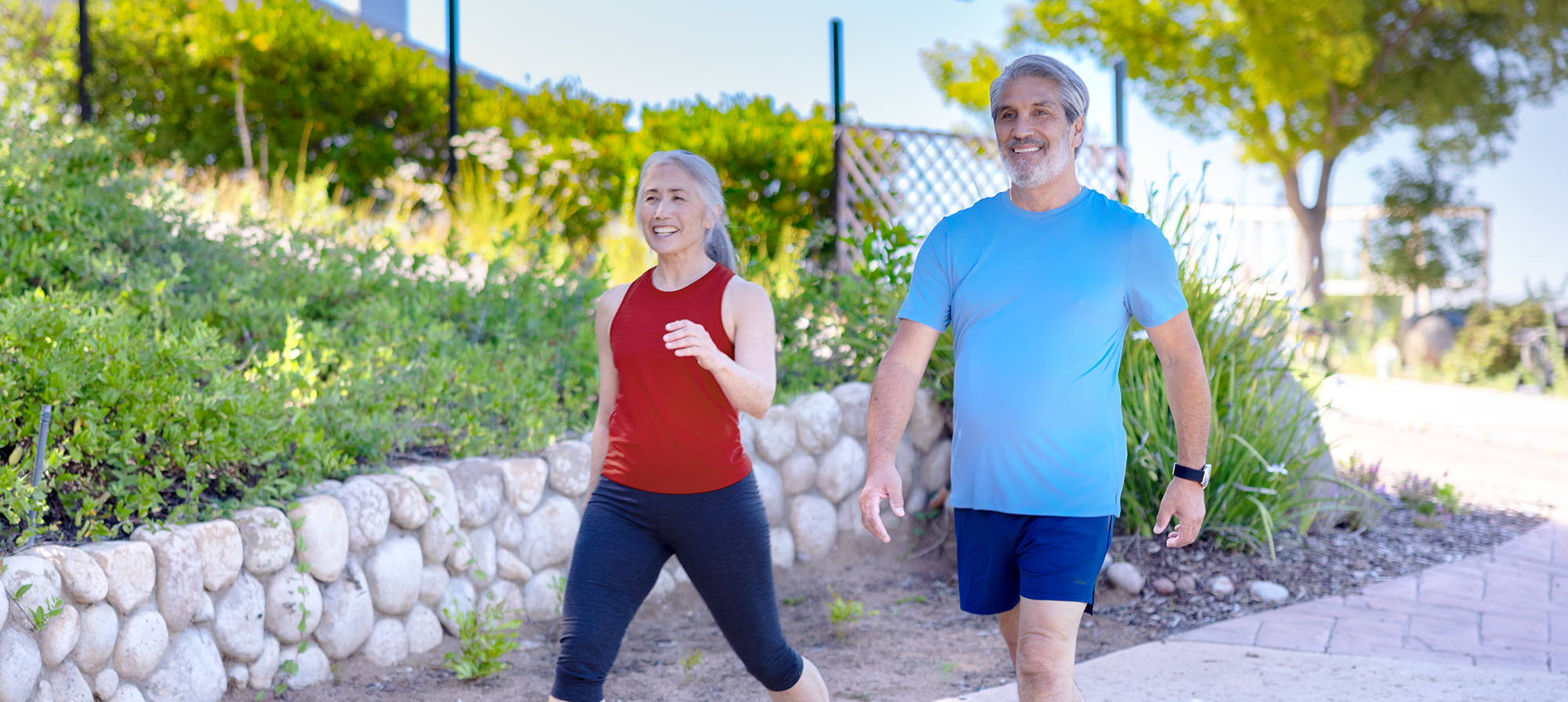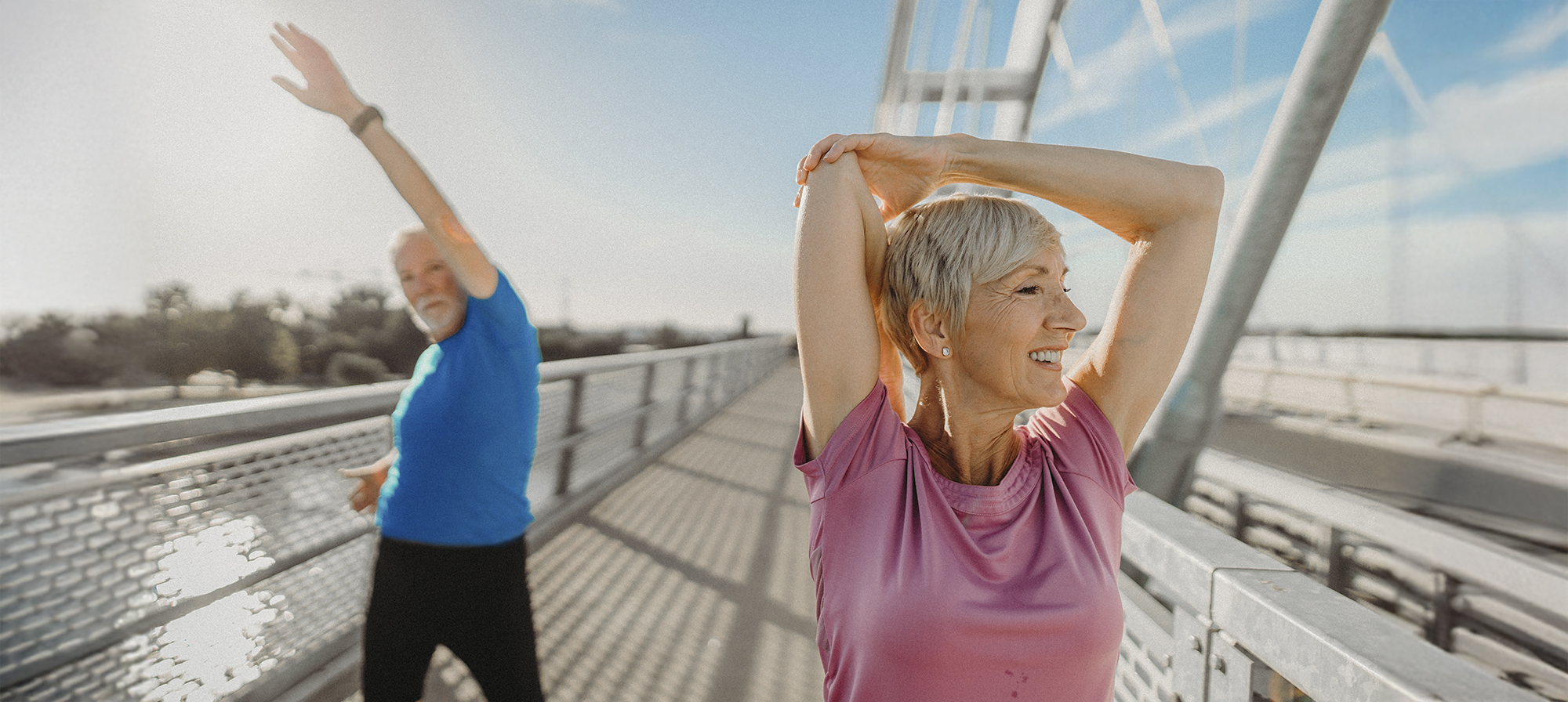If weight loss is starting to seem unachievable, try setting a different goal. Getting more physically fit can improve your health in many of the same ways. And you might find gaining fitness easier and more rewarding than losing weight.
It’s no secret that being overweight and obese have been linked with a higher risk for some pretty serious health conditions. (Having a body mass index, or BMI, between 25 and 29.9 is considered overweight. Having a BMI of 30 and above is considered obese.) And research has long shown that losing weight can help reduce those risks.
But, even with the best of intentions, losing weight and keeping it off can be hard. Fortunately, it’s not the only way to get healthier and live longer.
A recent study suggests that improving cardiorespiratory fitness might be more vital for a longer, healthier life than losing weight. Cardiorespiratory fitness is a measure of how well your body can supply oxygen-rich blood to your muscles. The more fit you are, the more efficient your lungs, heart, and blood vessels are at getting oxygen-rich blood to your muscles.
Here’s why that might be more crucial than weight loss: Focusing on fitness, rather than weight loss, might help you avoid weight cycling
Focusing on fitness, rather than weight loss, might help you avoid weight cycling
Focusing too much on weight loss can backfire. You might work hard to lose weight but end up gaining it back. This cycle may repeat over and over in a pattern known as weight cycling or yo-yo dieting. It can start to feel futile to keep trying. And repeatedly gaining and losing significant amounts of weight may raise your risk of obesity and harm your health. Note that small changes in your weight from week to week are normal.
 Getting in better physical shape might improve your overall health—even if you don’t lose weight
Getting in better physical shape might improve your overall health—even if you don’t lose weight
Studies have found that being fit greatly lowers the risk of heart attack and stroke. This is true even for people who remain overweight or obese. In other words, getting in shape improves heart health even for people who don’t lose weight in the process. That suggests that some of the health benefits of exercise don’t depend on its ability to lower body weight.
 Being fit might help you live longer, even if you’re still overweight
Being fit might help you live longer, even if you’re still overweight
Studies have found that being more physically fit can greatly lower the risk of death linked with being overweight or obese. It may even get rid of this risk fully—even if you’re overweight or obese. In fact, the risk of death is greater for unfit people of normal weight than it is for fit people who are in the overweight range.
This is not to say that losing weight is pointless. While findings are mixed, there is still a lot of strong, reliable evidence that losing weight can reduce the risk of death. But, if you’ve had a hard time losing weight and/or keeping it off, you might feel frustrated and tempted to stop trying.
A shift in focus might be helpful. So, rather than giving up on healthy habits altogether, try making fitness your goal, rather than weight loss. The point is that there is no single path to health and fitness. If one path proves to be daunting, try another. You might find a longer, more healthful life along the way.
 Steps to increase your cardiorespiratory fitness
Steps to increase your cardiorespiratory fitness
Research suggests that you need moderate-to-high levels of cardiorespiratory fitness to enjoy these health benefits. And the best way to boost your cardiorespiratory fitness is with cardio or aerobic exercise. Here’s what experts recommend.
Aim for 150 to 300 minutes a week of moderate-intensity cardio, such as:
- Brisk walking
- Hiking on even terrain
- Jogging
- Water aerobics
- Doubles tennis
Or aim for 75 to 150 minutes a week of vigorous-intensity cardio, such as:
- Hiking on hilly terrain
- Jogging or running
- Swimming
- Biking
- Singles tennis
When you’re doing a cardio workout, like walking briskly, you’ll notice that you breathe more deeply and quickly. That helps your lungs take in more oxygen and deliver it to your bloodstream. You’ll also notice your heart beating more quickly. That’s a sign that your heart is pumping more quickly and strongly which helps push that oxygen-rich blood to your muscles.
The more often you do cardio workouts, the better your lungs, heart, and blood vessels get at doing this work. If you walk at a brisk clip for 2 miles, 3 days a week, for a whole month, you’ll likely notice that it takes less effort at the end of the month compared to when you started. That’s a sign that you have improved your cardiorespiratory fitness.
 Ways to boost your overall fitness
Ways to boost your overall fitness
It’s also a good idea to do strength training and balance training, as well as cardio. That can help boost your overall fitness. All 3 types of training are crucial to a balanced fitness routine.
Experts recommend strength training twice a week. Strength training can help you build muscle and increase bone density. This can help you improve your balance and protect your joints. It can help you stay active, safely, as you get older. Also, muscle burns more calories than fat. So, boosting your muscle mass can help you lose or manage weight.
Strength training activities include:
- Using weight machines, free weights, or resistance bands
- Doing bodyweight exercises, like squats and pushups
And for older adults, balance training can help protect you from falls. You may want to weave these exercises into your strength training routine. Or do them periodically throughout the week.
Good balance exercises include:
- Standing on one foot
- Walking heel to toe
- Using a balance board
- Practicing certain yoga or tai chi poses
 Support your fitness with healthy lifestyle habits
Support your fitness with healthy lifestyle habits
Along with working out, there are other healthy lifestyle habits that can help support your fitness and your overall health. These include:
- Getting good, quality sleep
- Managing stress
- Eating whole foods, like fruits and vegetables, whole grains, and lean protein
- Limiting highly processed foods, like salty snacks, sugary treats, and fast food
- Not smoking (or quitting smoking)
- Drinking moderate amounts of alcohol (or not drinking alcohol)
 Get started
Get startedIf you haven’t been active in a while, talk with your doctor before you get started. Your doctor can recommend what types of exercise may be best for you given your individual risks. They can also tell you what to avoid. A physical therapist or certified personal trainer can set you up with a fitness routine based on your doctor’s recommendations if you don’t know where to start. Once you begin your fitness journey, try not to fixate on the scale. Instead, consider other markers of your progress:
- Do you feel better?
- Is your blood pressure improving?
- Are you sleeping better?
- Have you lowered your LDL cholesterol and raised your HDL cholesterol?
These are signs that your health is improving. And that kind of progress is far more important than hitting a certain number on a scale.
Not a Silver&Fit® member? Learn more about everything the program has to offer, including more helpful healthy living tips like this, here on our website.
This information is not intended to take the place of regular medical care or advice. Please check with your doctor before using this information or beginning any self-care program. Images used for this article do not depict any members of the Silver&Fit Program.
References
Barry, V. W., Baruth, M., Beets, M. W., Durstine, J. L., Liu, J., & Blair, S. N. (2014, January-February). Fitness vs. fatness on all-cause mortality: A meta-analysis. Progress in Cardiovascular Diseases, 56(4), 382-390. https://doi.org/10.1016/j.pcad.2013.09.002
Barry, V. W., Caputo, J. L., & Kang, M. (2018, July-August). The joint association of fitness and fatness on cardiovascular disease mortality: A meta-analysis. Progress in Cardiovascular Diseases, 61(2), 136-141. https://doi.org/10.1016/j.pcad.2018.07.004
Centers for Disease Control and Prevention. (2021, August 27). About adult BMI. https://www.cdc.gov/healthyweight/assessing/bmi/adult_bmi/index.html
Centers for Disease Control and Prevention. (2021, July 29). Physical activity for different groups. https://www.cdc.gov/physical-activity-basics/guidelines/?CDC_AAref_Val=https://www.cdc.gov/physicalactivity/basics/age-chart.html
Cleveland Clinic. (2020, September 2). 5 healthy habits that prevent chronic disease. https://health.clevelandclinic.org/5-healthy-habits-that-prevent-chronic-disease/
Cleveland Clinic. (2019, October 1). Why people diet, lose weight and gain it all back..
https://health.clevelandclinic.org/why-people-diet-lose-weight-and-gain-it-all-back
Gaesser, G. A., & Angadi, S. S. (2021, October 22). Obesity treatment: Weight loss versus increasing fitness and physical activity for reducing health risks. iScience, 24(10), 102995. https://doi.org/10.1016/j.isci.2021.102995
Gaesser, G. A., Angadi, S. S., & Sawyer, B. J. (2011, May). Exercise and diet, independent of weight loss, improve cardiometabolic risk profile in overweight and obese individuals. The Physician and Sportsmedicine, 39(2), 87-97. https://doi.org/10.3810/psm.2011.05.1898
The Global B.M.I. Mortality Collaboration, Di Angelantonio, E., Bhupathiraju Sh, N., Wormser, D., Gao, P., Kaptoge, S., Berrington de Gonzalez, A., Cairns, B. J., Huxley, R., Jackson Ch, L., Joshy, G., Lewington, S., Manson, J. E., Murphy, N., Patel, A. V., Samet, J. M., Woodward, M., Zheng, W., Zhou, M., Bansal, N., Barricarte, A., Carter, B., Cerhan, J. R., Smith, G. D., Fang, X., Franco, O. H., Green, J., Halsey, J., Hildebrand, J. S., Jung, K. J., Korda, R. J., McLerran, D. F., Moore, S. C., O'Keeffe, L. M., Paige, E., Ramond, A., Reeves, G. K., Rolland, B., Sacerdote, C., Sattar, N., Sofianopoulou, E., Stevens, J., Thun, M., Ueshima, H., Yang, L., Yun, Y. D., Willeit, P., Banks, E., Beral, V., Chen, Z., Gapstur, S. M., Gunter, M. J., Hartge, P., Jee, S. H., Lam, T. H., Peto, R., Potter, J. D., Willett, W. C., Thompson, S. G., Danesh, J., & Hu, F. B. (2016, August 20). Body-mass index and all-cause mortality: Individual-participant-data meta-analysis of 239 prospective studies in four continents. Lancet, 388(10046), 776-786. https://doi.org/10.1016/S0140-6736(16)30175-1
Kakinami, L., Knauper, B., & Brunet, J. (2020, Aug). Weight cycling is associated with adverse cardiometabolic markers in a cross-sectional representative US sample. Journal of Epidemiology and Community Health, 74(8), 662-667. https://doi.org/10.1136/jech-2019-213419
Pinckard, K., Baskin, K. K., & Stanford, K. I. (2019, June). Effects of exercise to improve cardiovascular health. Frontiers in Cardiovascular Medicine, 6, 69. https://doi.org/10.3389/fcvm.2019.00069
Mayo Clinic. (2022, February 17). Aerobic exercise: Top 10 reasons to get physical. https://www.mayoclinic.org/healthy-lifestyle/fitness/in-depth/aerobic-exercise/art-20045541
Mayo Clinic. (2021, May 15). Strength training: Get stronger, leaner, healthier. https://www.mayoclinic.org/healthy-lifestyle/fitness/in-depth/strength-training/art-20046670
Ross, R., Blair, S. N., Arena, R., Church, T. S., Despres, J. P., Franklin, B. A., Haskell, W. L., Kaminsky, L. A., Levine, B. D., Lavie, C. J., Myers, J., Niebauer, J., Sallis, R., Sawada, S. S., Sui, X., Wisloff, U., American Heart Association Physical Activity Committee of the Council on, L., Cardiometabolic, H., Council on Clinical, C., Council on, E., Prevention, Council on, C., Stroke, N., Council on Functional, G., Translational, B., & Stroke, C. (2016, Dec 13). Importance of assessing cardiorespiratory fitness in clinical practice: A case for fitness as a clinical vital sign: A scientific statement from the American Heart Association. Circulation, 134(24), e653-e699. https://doi.org/10.1161/CIR.0000000000000461
United States Department of Health and Human Services. (2018). Physical activity guidelines for Americans (2nd ed.). https://health.gov/sites/default/files/2019-09/Physical_Activity_Guidelines_2nd_edition.pdf
This article was written by Nora Byrne, edited by Candace Hodges, and clinically reviewed by Jossue Ortiz, DC. Last reviewed on February 15, 2025, by Jaynie Bjornaraa, PhD, MPH, PT, SCS, LAT, ATC, CSCS, CSPS.





